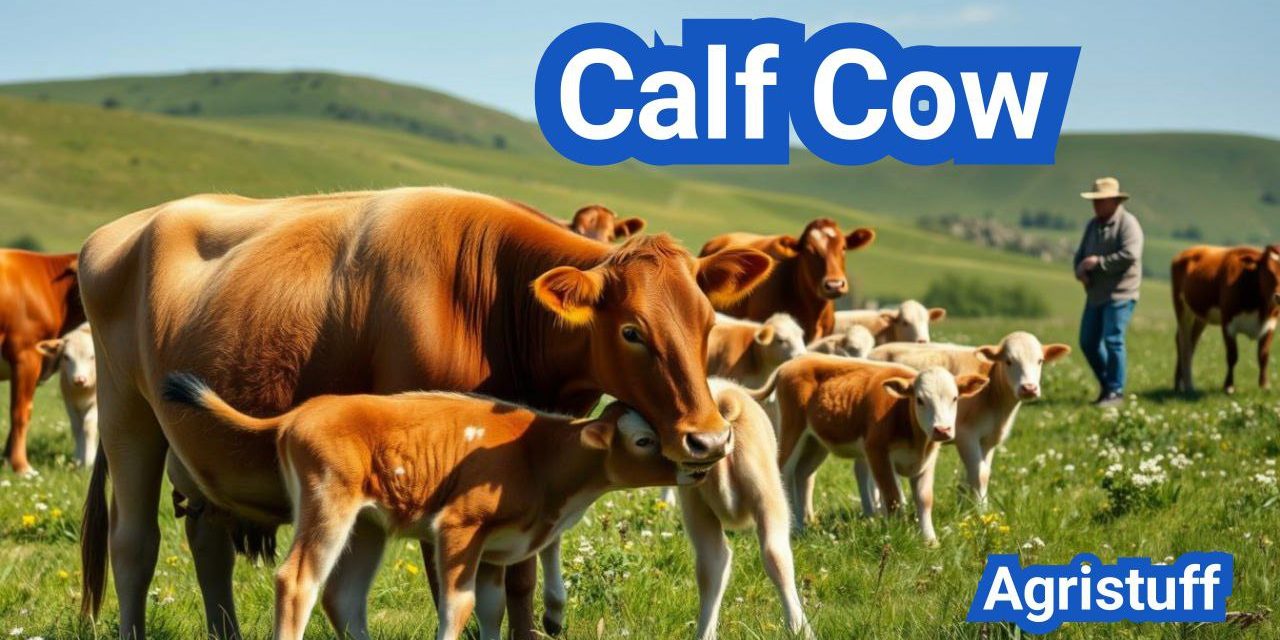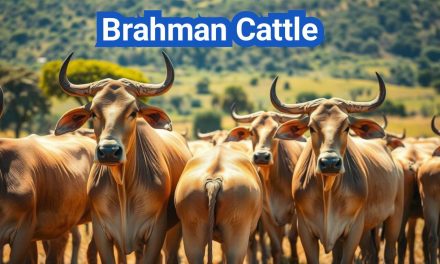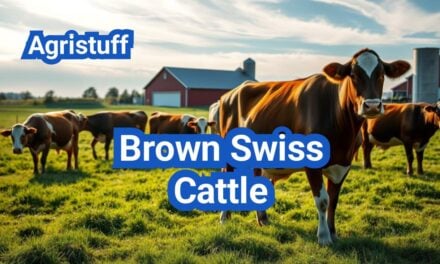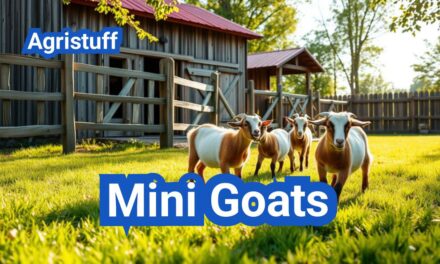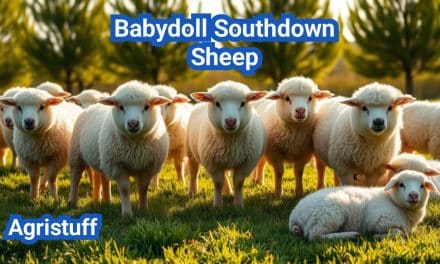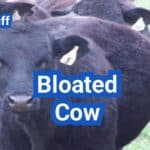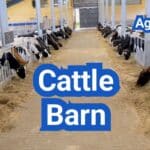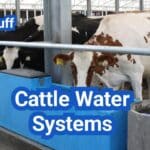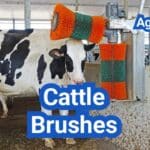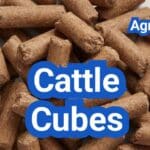Effective livestock management is crucial for the success of cattle farming operations. Proper care and nutrition are essential for the growth and development of young livestock.
Calf cow management involves several key aspects, including nutrition, health monitoring, and weaning practices. By focusing on these areas, farmers can improve the overall health and productivity of their cattle.
Proper calf nutrition is vital for the development of strong, healthy animals. This, combined with effective weaning strategies, sets the stage for successful livestock farming.
Key Takeaways
- Proper nutrition is crucial for the growth and development of young livestock.
- Effective health monitoring is essential for maintaining cattle health.
- Weaning practices significantly impact the overall productivity of cattle.
- Livestock management involves multiple key aspects for success.
- Careful management practices lead to healthier, more productive cattle.
The Fundamentals of Livestock Management
The fundamentals of livestock management form the foundation upon which successful cattle farming is built. Effective management practices are crucial for ensuring the health, growth, and productivity of cattle.
The Economic Importance of Proper Calf Rearing
Proper calf rearing has a significant economic impact on livestock farming operations. A well-managed calf rearing program can lead to improved growth rates, reduced mortality, and increased productivity in later life stages. This, in turn, contributes to the overall profitability of the farm. Investing in proper calf care is essential for achieving long-term economic success in cattle farming.
Setting Production Goals for Your Operation
Setting clear production goals is vital for the success of any livestock operation. Farmers should establish specific, measurable objectives related to growth rates, weaning weights, and overall herd health. By doing so, they can better manage resources, monitor progress, and make informed decisions to optimize their operation’s performance. Regularly reviewing and adjusting these goals helps ensure that the farm remains on track to meet its economic targets.
By understanding the economic importance of proper calf rearing and setting realistic production goals, farmers can enhance their livestock management practices. This leads to improved efficiency, productivity, and profitability in their cattle farming operations.
Essential Calf Cow Care Basics

Effective calf cow management involves a combination of the right equipment, optimal living conditions, and consistent daily care routines. Providing the best possible start in life is crucial for the health, growth, and productivity of calves.
Required Equipment and Supplies | Calf Cow
The care of calf cows begins with the appropriate equipment and supplies. Essential items include feeding buckets, bottles, and milk replacers (if not being fed whole milk), as well as adequate bedding materials like straw or sand for comfort and hygiene.
Creating an Optimal Environment for Growth
An optimal environment is vital for calf development. This includes providing adequate ventilation, maintaining cleanliness, and ensuring sufficient space for movement. A well-designed calf housing system can significantly impact their health and growth rates.
Daily Care Routines and Schedules | Calf Cow
Establishing a daily care routine is crucial. This includes regular feeding times, monitoring health, and maintaining cleanliness. A sample daily schedule might look like this:
| Time | Activity |
|---|---|
| Morning | Feed calves, clean living areas |
| Afternoon | Monitor health, provide fresh water |
| Evening | Feed calves again, ensure adequate bedding |
By focusing on these essential care basics, farmers can significantly improve the health and productivity of their calf cows, laying the groundwork for a successful cattle farming operation.
Popular Cattle Breeds and Their Characteristics
The world of cattle breeding is diverse, with numerous breeds offering unique characteristics tailored to specific agricultural needs. Cattle breeds are selected based on their suitability for either dairy or beef production, among other factors.
Dairy Breeds: Holstein, Jersey, and Brown Swiss
Dairy breeds like Holstein are renowned for their high milk production, making them a staple in dairy farming. Jersey cows, on the other hand, produce milk with a high butterfat content, ideal for cheese production. Brown Swiss cattle are known for their longevity and robust milk production.
Beef Breeds: Angus, Hereford, and Charolais
Beef breeds such as Angus are prized for their marbling, which enhances the flavor and tenderness of the beef. Hereford cattle are known for their hardiness and ease of handling, while Charolais are recognized for their rapid growth rate and lean meat production.
Heritage and Specialty Breeds: Highland and Longhorn
Highland cattle are adapted to harsh, rugged environments and are known for their hardiness and the quality of their beef. Longhorn cattle are recognized for their distinctive horns and their ability to thrive in challenging conditions.
Understanding the characteristics of these breeds is crucial for farmers to make informed decisions about their livestock, ensuring the success of their operation.
Newborn Calf Management: First 24 Hours

Effective care during the first 24 hours can significantly impact a newborn calf’s health outcomes. This critical period sets the stage for the calf’s future growth, productivity, and overall well-being.
Ensuring Proper Colostrum Intake | Calf Cow
Colostrum is the first form of milk produced by the cow, rich in antibodies that provide newborn calves with initial immune protection. Ensuring that calves receive adequate colostrum within the first few hours of birth is crucial. Calves should receive at least 4-6 quarts of colostrum within the first 6 hours of life. This early intake is vital for establishing a strong immune system.
Navel Care and Initial Health Assessment | Calf Cow
Navel care involves disinfecting the navel to prevent infection, a common issue in newborn calves. Iodine solutions are typically used for this purpose. An initial health assessment should also be conducted to check for any signs of distress, congenital issues, or other health concerns.
Monitoring the Cow After Calving | Calf Cow
Monitoring the cow after calving is equally important, as it ensures the health and well-being of both the cow and the calf. Observing the cow for any signs of illness or difficulty with milk production is crucial in the postpartum period.
| Care Aspect | Importance | Action |
|---|---|---|
| Colostrum Intake | Provides initial immune protection | Ensure 4-6 quarts within 6 hours |
| Navel Care | Prevents infection | Disinfect with iodine solution |
| Monitoring Cow | Ensures cow and calf health | Observe for signs of illness |
Calf Housing Systems and Requirements
Effective calf housing is crucial for the health and development of young cattle. A well-designed housing system can significantly reduce the risk of disease and promote healthy growth.
Individual vs. Group Housing Options
Calf housing can be categorized into individual and group housing systems. Individual housing provides a controlled environment that reduces the risk of disease transmission among calves. On the other hand, group housing allows for social interaction, which can be beneficial for calf development. The choice between these systems depends on factors such as farm size, management practices, and available resources.
Ventilation, Bedding, and Space Requirements
Adequate ventilation is essential to remove moisture and airborne pathogens from the housing environment. Bedding materials such as straw or sand help keep the calves dry and comfortable. Ensuring sufficient space per calf is also critical to prevent overcrowding and reduce stress.
Regional Weather Considerations for Housing
Regional weather conditions play a significant role in determining the design and management of calf housing. In colder climates, housing should be well-insulated to maintain warmth, while in hotter climates, ventilation and shading are crucial to prevent heat stress.
Calf Cow Nutrition Strategies
The nutritional needs of calves are specific and must be met through appropriate feeding strategies to ensure optimal growth.
Nutrition plays a critical role in the development of calves, influencing their health, growth rate, and future productivity. A well-planned nutrition strategy is essential for livestock producers to maximize the potential of their calves.
Milk and Milk Replacer Feeding Programs
Milk or milk replacer feeding is a crucial aspect of calf nutrition, especially during the early stages of life. Milk replacers are formulated to mimic the nutritional composition of natural milk and can be a cost-effective alternative. The choice between whole milk and milk replacer depends on factors such as availability, cost, and calf nutritional needs.
Transitioning to Solid Feeds and Forages
As calves grow, they need to be transitioned from a diet of milk or milk replacer to solid feeds and forages. This transition should be gradual to prevent digestive upset. Introducing high-quality starter feeds and forages early on can help in developing a healthy rumen.
Water Requirements Throughout Development
Adequate water intake is vital for calves at all stages of development. Ensuring access to clean, fresh water is crucial for maintaining hydration and overall health. Water requirements may vary based on factors such as age, diet, and environmental conditions.
Feeding Schedules and Amounts by Age | Calf Cow
Feeding schedules and amounts should be tailored to the age and developmental stage of the calves. For instance, younger calves require more frequent feeding of milk or milk replacer, while older calves can be fed less frequently but with a greater emphasis on solid feeds.
By implementing a thoughtful nutrition strategy, producers can promote healthy growth, reduce the risk of nutritional deficiencies, and improve the overall productivity of their livestock operation.
Comprehensive Health Management for Calves
Comprehensive health management for calves encompasses a range of practices to ensure their well-being and productivity. Effective health management is crucial for the health and productivity of calves, involving vaccination protocols, parasite control measures, and the prevention of common health issues.
Vaccination Protocols by Age and Production Type
Vaccination is a critical component of calf health care. The specific vaccination protocols can vary based on the age of the calf and its production type (dairy or beef). For instance, young calves typically receive vaccinations against common pathogens such as Clostridium and respiratory viruses. A typical vaccination schedule might include initial vaccinations at weaning, followed by booster shots a few weeks later.
| Age | Vaccination Type | Production Type |
|---|---|---|
| 0-2 months | Initial Vaccination (e.g., against Clostridium) | Dairy & Beef |
| 2-6 months | Booster Shots | Dairy & Beef |
| 6 months+ | Annual Boosters | Dairy & Beef |
Parasite Control Programs | Calf Cow
Parasite control is another vital aspect of maintaining calf health. Internal parasites, such as worms, can significantly impact calf growth and productivity. Programs typically involve a combination of deworming medications and pasture management strategies. Regular monitoring for parasite loads is essential to adjust control measures as needed.
Common Health Issues and Prevention | Calf Cow
Calves are susceptible to various health issues, including respiratory diseases, diarrhea, and parasitic infections. Preventive measures include maintaining a clean environment, ensuring adequate nutrition, and implementing vaccination and parasite control programs. Early detection of health issues is critical for effective intervention.
When to Call the Veterinarian | Calf Cow
It’s essential to know when to seek veterinary assistance. Signs that necessitate a call to the veterinarian include severe diarrhea, labored breathing, lethargy, or a significant decrease in feed intake. Prompt action can prevent minor issues from becoming major health concerns.
Monitoring Calf Growth and Development

Effective calf management hinges on closely monitoring growth and development to ensure optimal health and productivity. This involves tracking key indicators and adjusting management strategies to meet the needs of the calves.
Growth Benchmarks by Age and Breed
Growth benchmarks vary by age and breed, providing a standardized measure to assess whether calves are developing as expected. For instance, dairy breeds like Holstein and Jersey have different growth rates compared to beef breeds like Angus and Hereford. By understanding these benchmarks, farmers can identify potential issues early and make necessary adjustments.
Body Condition Scoring Systems | Calf Cow
Body condition scoring (BCS) is a valuable tool for assessing the nutritional status and overall health of calves. BCS systems evaluate the amount of fat reserves in relation to the skeletal frame, providing insights into whether a calf is under or over-conditioned. Regular BCS assessments help farmers make informed decisions about feeding and health management.
Record-Keeping for Performance Tracking
Accurate record-keeping is essential for tracking calf performance over time. This includes maintaining detailed records of growth rates, health issues, and feeding practices. By analyzing these records, farmers can identify trends, optimize management strategies, and improve overall calf health and productivity.
By combining growth benchmarks, body condition scoring, and thorough record-keeping, farmers can ensure that their calves are on track to meet production goals, whether for dairy or beef production.
The Cow-Calf Bond in Livestock Farming

The cow-calf bond is a crucial aspect of livestock farming that significantly impacts the welfare and productivity of both cows and calves. This bond is characterized by natural behaviors and bonding patterns that are essential for the health and development of the calf.
Natural Behaviors and Bonding Patterns
The natural behaviors exhibited by cows and calves are vital for establishing a strong bond. Immediately after birth, calves begin to interact with their mothers, and this early interaction is crucial for developing their bond. Key behaviors include licking, nursing, and vocalization, which help to strengthen their relationship.
Managing Separation Stress | Calf Cow
When cows and calves are separated, it can cause significant stress for both animals. Managing this separation stress is crucial to maintaining their welfare. Strategies such as gradual weaning and providing adequate nutrition can help mitigate the negative impacts of separation.
- Gradual weaning processes
- Adequate nutrition for calves
- Monitoring cow and calf health post-separation
Benefits of Extended Cow-Calf Time Together
Allowing cows and calves to spend extended time together can have several benefits, including improved calf health and reduced stress. This extended bonding period can lead to better growth rates and overall productivity in calves.
By understanding and managing the cow-calf bond effectively, farmers can promote a healthier and more productive livestock operation.
Effective Calf Weaning Tips and Techniques

Effective calf weaning is crucial for the overall health and productivity of livestock operations, necessitating a well-thought-out approach. Weaning is a critical period that can significantly impact a calf’s development and future productivity.
Traditional vs. Progressive Weaning Methods
There are two primary weaning methods: traditional and progressive. Traditional weaning involves abruptly separating the calf from its mother, typically at a specific age or weight. In contrast, progressive weaning gradually reduces the calf’s reliance on milk over a period, minimizing stress and potential health issues.
“Progressive weaning has been shown to reduce stress in calves, making the transition smoother,” according to livestock experts. This method allows calves to adjust gradually, potentially leading to better health outcomes.
Age and Weight Considerations for Optimal Weaning
The optimal time for weaning depends on factors such as breed, age, and weight. Generally, calves are weaned between 6 to 10 months of age. It’s essential to consider both the age and weight of the calf to ensure they are sufficiently developed to thrive without milk.
- Monitor calf weight and overall health.
- Consider breed-specific guidelines.
- Adjust weaning age based on nutritional and health status.
Reducing Stress During the Weaning Process
Reducing stress is crucial during weaning. Strategies include maintaining a consistent environment, providing adequate nutrition, and ensuring access to clean water. Minimizing changes during this period can help reduce anxiety and stress in calves.
Post-Weaning Management Strategies | Calf Cow
After weaning, it’s vital to continue providing high-quality nutrition and monitor the health of the calves closely. Regular veterinary check-ups can help identify any potential issues early, ensuring timely intervention.
| Weaning Strategy | Benefits | Considerations |
|---|---|---|
| Traditional Weaning | Simple to implement | Can be stressful for calves |
| Progressive Weaning | Reduces stress | Requires careful planning |
By adopting effective weaning strategies, farmers can improve the health and productivity of their livestock, ultimately enhancing the sustainability of their operations.
Specialized Management for Dairy Calves
Effective dairy calf management is crucial for the long-term success of dairy operations, encompassing various specialized practices. Dairy calves require careful attention to develop into productive dairy cows, involving strategies for heifer development, managing male dairy calves, and potentially utilizing automated feeding systems.
Heifer Development for Future Milk Production
Heifer development is a critical phase in dairy calf management, directly impacting future milk production. Proper nutrition, health monitoring, and breeding practices are essential during this period. A well-developed heifer is more likely to become a productive cow, contributing to the overall efficiency of the dairy operation.
Managing Male Dairy Calves Effectively
Male dairy calves present a unique challenge in dairy farming. Decisions regarding their management, such as raising for beef or using as dairy sires, significantly impact the economic viability of the operation. Effective management strategies for male dairy calves include providing appropriate nutrition and healthcare to ensure their optimal growth and development.
Automated Feeding Systems for Dairy Operations
Automated feeding systems represent a technological advancement in dairy calf management, offering precision and efficiency in feeding practices. These systems can monitor and adjust feed intake according to individual calf needs, promoting healthy growth and development. The implementation of automated feeding systems can lead to improved operational efficiency and reduced labor costs.
| Management Strategy | Description | Benefits |
|---|---|---|
| Heifer Development | Proper nutrition and health monitoring | Enhanced milk production, improved cow health |
| Male Dairy Calf Management | Raising for beef or as dairy sires | Economic viability, optimal growth |
| Automated Feeding Systems | Precision feeding based on individual needs | Improved operational efficiency, reduced labor costs |
Beef Calf Growth Optimization

Effective strategies for beef calf growth optimization can significantly impact the overall productivity of a cattle farm. Optimizing growth rates is crucial for achieving production goals and ensuring the long-term sustainability of the operation.
Cow-Calf Pair Management on Pasture
Proper management of cow-calf pairs on pasture is essential for optimizing beef calf growth. Ensuring that both cows and calves have access to high-quality pasture and adequate nutrition is critical. Adequate pasture management can lead to improved growth rates and healthier calves.
Creep Feeding Strategies and Benefits
Creep feeding is a strategy used to provide additional nutrition to calves while they are still with their mothers. This can be particularly beneficial for promoting growth and development. Creep feeding can lead to increased weaning weights and improved overall calf health.
| Creep Feeding Strategy | Benefits |
|---|---|
| Providing high-energy feed | Increased weaning weights |
| Offering supplemental nutrients | Improved calf health |
“Creep feeding can be an effective way to promote calf growth and improve weaning weights, but it requires careful management to ensure its success.”
Preparing Calves for Backgrounding or Finishing
As calves grow, preparing them for backgrounding or finishing phases is critical. This involves transitioning them to different feeding regimes and ensuring they are healthy and robust. Proper preparation can lead to better performance in subsequent production stages.
By implementing these strategies, cattle producers can optimize beef calf growth and improve the overall efficiency of their operations.
Sustainable Calf Farming Practices

Sustainability in calf farming is not just a trend, but a necessary step towards environmentally friendly livestock production. As the agricultural sector continues to evolve, adopting sustainable practices is crucial for the long-term viability of calf farming operations.
Environmental Considerations
Environmental considerations play a significant role in sustainable calf farming. This includes managing waste effectively, conserving water, and reducing the carbon footprint of farming operations. By implementing practices such as rotational grazing and using renewable energy sources, farmers can significantly reduce their environmental impact.
Reducing Resource Use | Calf Cow
Reducing resource use while maintaining performance is another key aspect of sustainable calf farming. This can be achieved through efficient feeding strategies, minimizing waste, and optimizing the use of equipment and facilities. By adopting such practices, farmers can lower their operational costs and contribute to a more sustainable food production system.
Certification Programs
Certification programs for sustainable livestock farming provide a framework for farmers to demonstrate their commitment to sustainability. Programs such as “Certified Sustainable Beef” or “Animal Welfare Approved” offer standards and verification processes that help farmers achieve and showcase their sustainable practices. Participating in these programs can enhance the marketability of their products and contribute to a more sustainable agricultural industry.
By embracing sustainable calf farming practices, farmers can ensure the health and productivity of their operations while contributing to environmental stewardship.
Technology in Modern Calf Management
Technology plays a crucial role in enhancing calf management practices. The livestock industry has seen significant advancements with the integration of various technologies aimed at improving the efficiency and effectiveness of calf care.
Automated Feeding and Monitoring Systems
Automated feeding systems have revolutionized the way calves are fed, allowing for precise control over the amount and frequency of feeding. This not only improves the nutritional intake of calves but also reduces labor costs. Monitoring systems complement feeding systems by tracking the health and behavior of calves, enabling early detection of potential issues.
Health Tracking Technologies
Health tracking technologies, including wearable devices and sensors, provide real-time data on the health status of calves. These technologies can monitor vital signs, detect early signs of illness, and track growth patterns, facilitating proactive health management.
Record-Keeping Software and Applications
Record-keeping is a critical aspect of calf management. Software and mobile applications designed for livestock management enable farmers to maintain detailed records of feeding schedules, health interventions, and growth metrics. This digital record-keeping enhances data accuracy and accessibility, supporting informed decision-making.
The adoption of technology in calf management is transforming the livestock industry by improving outcomes, reducing costs, and enhancing the overall efficiency of farm operations.
Troubleshooting Common Calf Cow Problems
Troubleshooting common problems in calf cow management is essential for ensuring the health and productivity of the operation. Effective troubleshooting strategies can help address issues that impact growth and development, ultimately leading to a more successful livestock management practice.
Addressing Growth Setbacks and Stunting
Growth setbacks and stunting in calves can be caused by various factors, including nutritional deficiencies, health issues, and environmental stressors. To address these problems, it’s crucial to identify the underlying cause and implement corrective measures. This may involve adjusting feeding programs, improving living conditions, or providing appropriate health interventions.
Managing Difficult Weaning Transitions
Weaning can be a challenging period for both calves and cows. To manage difficult weaning transitions, producers can implement gradual weaning methods, monitor the health and behavior of both calves and dams, and ensure that calves are consuming adequate solid feed before weaning.
Resolving Feeding and Digestive Issues
Feeding and digestive issues are common in calf cow management. Resolving these issues often involves adjusting feeding programs to ensure nutritional needs are met, monitoring for signs of illness, and maintaining proper hygiene practices.
Behavioral Problems and Solutions
Behavioral problems, such as excessive vocalization or pacing, can indicate stress or discomfort in calves. Solutions may include providing adequate space and social interaction, ensuring access to adequate nutrition and water, and minimizing stress during handling and weaning.
By understanding and addressing common problems in calf cow management, producers can improve the overall health and productivity of their operation. Effective troubleshooting is key to resolving issues related to growth, weaning, feeding, and behavior.
Building a Successful Calf Operation
Building a successful calf operation requires a comprehensive approach to calf cow management, encompassing nutrition, health, and growth monitoring. Effective livestock farming practices are crucial for raising healthy calves that thrive and contribute to a productive operation.
By implementing the strategies discussed, such as proper newborn calf care, optimal housing systems, and nutrition planning, farmers can establish a strong foundation for their calf operation. Monitoring growth and development, managing the cow-calf bond, and employing effective weaning techniques are also vital components.
A successful calf operation not only enhances the overall productivity of the farm but also contributes to the sustainability of livestock farming. By adopting best practices and staying informed about the latest advancements in calf management, farmers can achieve their production goals while maintaining a healthy and thriving herd.
FAQ
What are the key aspects of calf cow management?
Calf cow management encompasses care, growth, and weaning tips, all of which are crucial for the overall health and productivity of the cattle.
Why is proper calf rearing economically important?
Proper calf rearing is vital for the overall success and profitability of the livestock farming enterprise, as it directly impacts the health and productivity of the cattle.
What are the essential care basics for calf cows?
Essential care basics include necessary equipment and supplies, creating an environment conducive to growth, and implementing daily care routines.
What are some popular cattle breeds and their characteristics?
Popular breeds include dairy breeds like Holstein and Jersey, beef breeds such as Angus and Hereford, and heritage breeds like Highland and Longhorn, each with unique advantages and needs.
How should newborn calves be managed in the first 24 hours?
Newborn calves require adequate colostrum, proper navel care, and an initial health assessment, while also monitoring the cow after calving.
What are the different calf housing systems, and what are their requirements?
Calf housing systems include individual and group housing, with requirements for ventilation, bedding, and space, which can be influenced by regional weather conditions.
What nutritional strategies are used for calves?
Nutritional strategies include the use of milk and milk replacers, transitioning to solid feeds and forages, and ensuring adequate water throughout their development.
How is comprehensive health management achieved for calves?
Comprehensive health management involves vaccination protocols, parasite control programs, and prevention and management of common health issues, with guidance on when to seek veterinary assistance.
Why is monitoring calf growth and development important?
Monitoring growth and development is crucial, using growth benchmarks by age and breed, body condition scoring systems, and record-keeping for performance tracking.
What is the significance of the cow-calf bond in livestock farming?
The cow-calf bond is important, involving natural behaviors and bonding patterns, managing separation stress, and the benefits of extended time together for cows and calves.
What are effective strategies for weaning calves?
Effective weaning strategies include traditional and progressive weaning methods, considering optimal age and weight, reducing stress during weaning, and managing calves post-weaning.
How are dairy calves managed differently?
Dairy calf management involves heifer development for future milk production, managing male dairy calves, and the potential benefits of automated feeding systems.
What strategies optimize beef calf growth?
Optimizing beef calf growth involves managing cow-calf pairs on pasture, creep feeding strategies, and preparing calves for subsequent production stages.
What are the principles of sustainable calf farming?
Sustainable calf farming involves environmental considerations, reducing resource use while maintaining performance, and certification programs that support sustainable livestock farming practices.
How is technology used in modern calf management?
Technology is used through automated feeding and monitoring systems, health tracking technologies, and record-keeping software and applications.
How can common calf cow problems be troubleshooted?
Troubleshooting involves addressing growth setbacks, managing difficult weaning transitions, resolving feeding and digestive issues, and addressing behavioral problems.
Conclusion of: Calf Cow Management | Care, Growth and Weaning Tips
Calf cow management is crucial for maintaining a productive and profitable cattle farming operation. Proper care, optimal growth strategies, and effective weaning processes significantly contribute to the well-being of calves, impacting their future performance in dairy and beef production. This guide provides comprehensive insights into calf cow management, highlighting best practices for care, growth, and successful weaning.
What is Calf Cow Management?
Calf cow management refers to the essential practices designed to ensure the health, growth, and successful development of calves from birth through weaning. Effective calf cow management encompasses proper feeding, health care, housing, and weaning strategies, crucial for sustainable livestock farming. Calf Management Overview
Initial Care and Nutrition of Calf Cow
Proper initial care is essential in calf cow management, significantly influencing health and survival rates:
- Colostrum Intake: Ensuring calves receive colostrum immediately after birth to provide necessary antibodies for immunity.
- Navel Care: Disinfecting the calf’s navel to prevent infections.
- Nutrition: Early introduction of balanced nutrition to support healthy growth and development. Calf Nutrition and Colostrum
Feeding Practices in Calf Cow Management
Nutrition directly impacts calf cow growth and development:
- Milk Feeding: Appropriate quantity and frequency of milk feeding to optimize growth.
- Starter Feeds: Introducing calf starter feeds to encourage rumen development.
- Forage Introduction: Gradually incorporating forage into the diet to aid digestion and prepare calves for weaning. Calf Feeding Practices
Calf Cow Health Care Management
Maintaining calf health is vital in calf cow management to prevent diseases and promote optimal growth:
- Vaccination Programs: Immunizing calves against common diseases like scours and respiratory infections.
- Parasite Control: Regular deworming and parasite prevention practices.
- Routine Health Checks: Consistent veterinary assessments for early detection and treatment of health issues. Calf Health Management
Housing Requirements in Calf Cow Management
Proper housing contributes significantly to calf cow comfort, health, and productivity:
- Individual Housing: Utilizing hutches or pens to limit disease transmission.
- Group Housing: Efficient socialization and space optimization for older calves.
- Facility Maintenance: Regular sanitation and ventilation to ensure a healthy environment. Calf Housing Systems
Growth Monitoring in Calf Cow Management
Regular monitoring and recording of calf growth are essential components of effective calf cow management:
- Growth Measurements: Periodically weighing calves to monitor growth rates.
- Performance Records: Keeping detailed records to identify and address growth concerns promptly.
- Adjusting Nutrition: Modifying feed programs based on growth performance data. Calf Growth Monitoring
Weaning Practices in Calf Cow Management
Proper weaning is critical in calf cow management to ensure smooth transition and continued growth:
- Gradual Weaning: Reducing milk gradually while increasing solid feed intake.
- Stress Minimization: Implementing practices to reduce stress during weaning, such as group housing and consistent feeding schedules.
- Post-Weaning Care: Continued monitoring and nutrition management after weaning to support growth and health. Weaning Calves
Economic Implications of Calf Cow Management
Efficient calf cow management significantly influences farm profitability:
- Cost Efficiency: Reducing expenses through effective feeding, health care, and management practices.
- Productivity Impact: Enhancing long-term productivity by ensuring healthy and well-developed calves.
- Profit Analysis: Conducting regular economic evaluations to maximize calf management profitability. Economics of Calf Rearing
Environmental Considerations
Sustainable calf cow management practices enhance environmental responsibility:
- Waste Management: Effective manure handling to minimize environmental impact.
- Resource Optimization: Efficient use of water and feed resources to reduce waste.
- Pasture Management: Implementing grazing strategies that promote environmental sustainability. Sustainable Calf Management
Final Thought
Effective calf cow management, encompassing proper nutrition, healthcare, growth monitoring, and weaning practices, is essential for successful cattle farming. Implementing these best practices ensures optimal calf growth, health, and overall farm productivity and profitability.

